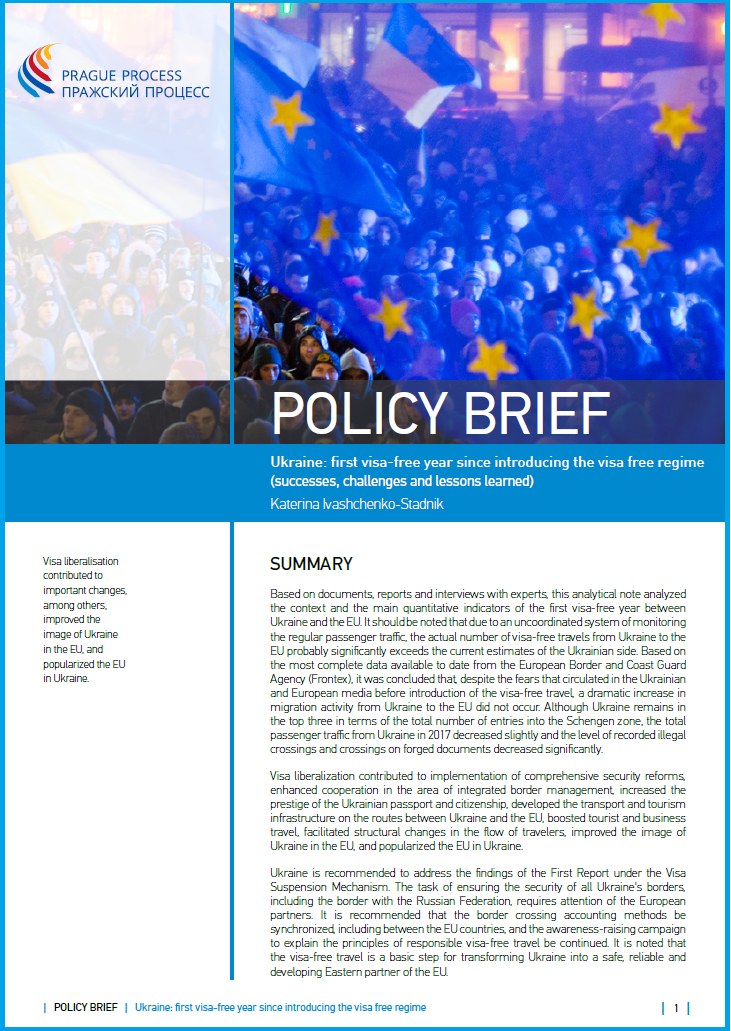Ukraine: First visa-free year since introducing the visa-free regime
7 December 2018
Briefs
Based on documents, reports and interviews with experts, this analytical note analyzed the context and the main quantitative indicators of the first visa-free year between Ukraine and the EU. It should be noted that due to an uncoordinated system of monitoring the regular passenger traffic, the actual number of visa-free travels from Ukraine to the EU probably significantly exceeds the current estimates of the Ukrainian side. Based on the most complete data available to date from the European Border and Coast Guard Agency (Frontex), it was concluded that, despite the fears that circulated in the Ukrainian and European media before introduction of the visa-free travel, a dramatic increase in migration activity from Ukraine to the EU did not occur. Although Ukraine remains in the top three in terms of the total number of entries into the Schengen zone, the total passenger traffic from Ukraine in 2017 decreased slightly and the level of recorded illegal crossings and crossings on forged documents decreased significantly.
Visa liberalization contributed to implementation of comprehensive security reforms, enhanced cooperation in the area of integrated border management, increased the prestige of the Ukrainian passport and citizenship, developed the transport and tourism infrastructure on the routes between Ukraine and the EU, boosted tourist and business travel, facilitated structural changes in the flow of travelers, improved the image of Ukraine in the EU, and popularized the EU in Ukraine.
Ukraine is recommended to address the findings of the First Report under the Visa Suspension Mechanism. The task of ensuring the security of all Ukraine's borders, including the border with the Russian Federation, requires attention of the European partners. It is recommended that the border crossing accounting methods be synchronized, including between the EU countries, and the awareness-raising campaign to explain the principles of responsible visa-free travel be continued. It is noted that the visa-free travel is a basic step for transforming Ukraine into a safe, reliable and developing Eastern partner of the EU.Based on documents, reports and interviews with experts, this analytical note analyzed the context and the main quantitative indicators of the first visa-free year between Ukraine and the EU. It should be noted that due to an uncoordinated system of monitoring the regular passenger traffic, the actual number of visa-free travels from Ukraine to the EU probably significantly exceeds the current estimates of the Ukrainian side. Based on the most complete data available to date from the European Border and Coast Guard Agency (Frontex), it was concluded that, despite the fears that circulated in the Ukrainian and European media before introduction of the visa-free travel, a dramatic increase in migration activity from Ukraine to the EU did not occur. Although Ukraine remains in the top three in terms of the total number of entries into the Schengen zone, the total passenger traffic from Ukraine in 2017 decreased slightly and the level of recorded illegal crossings and crossings on forged documents decreased significantly.

